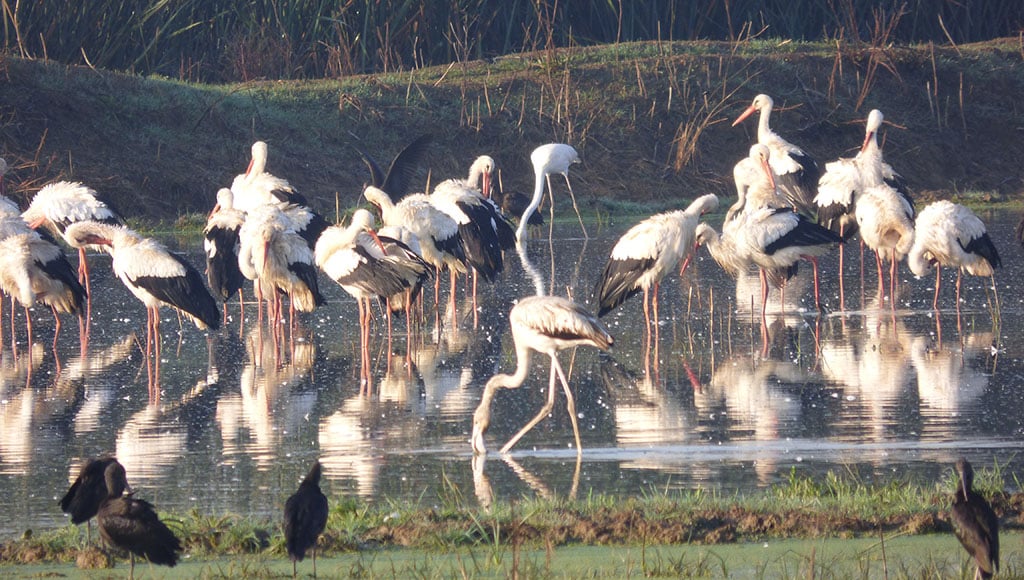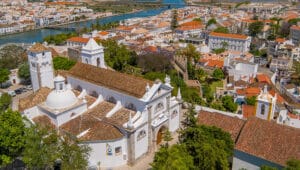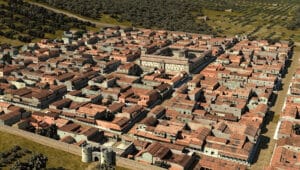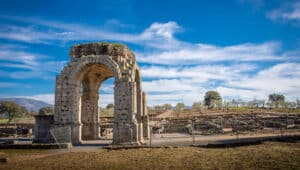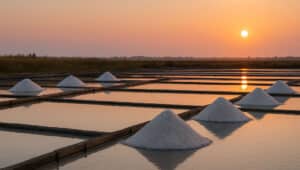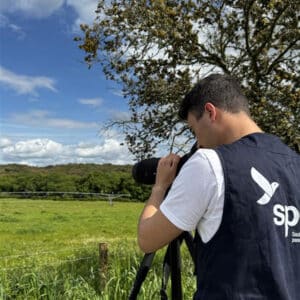Lagoa is situated in the western Algarve and was officially designated a city on April 19, 2001, but it retains the charm of a traditional town with its cobbled streets, whitewashed houses and population of around 6,000 people.
The name ‘Lagoa’ means lagoon and the town was originally called Alagoa for it was situated alongside two big lakes. It is easy to see why when the winter rains return the surrounding fields to their watery origins. These marshy, fertile lands attracted many settlers including the Iberians, Phoenicians and the Romans.
According to historical records, a lagoon ecosystem existed in the area in the Middle Ages. From the 8th century, Lagoa and much of the Algarve came under Moorish rule, becoming part of the Kingdom of Al-Gharb, which gives the Algarve its name. These settlers began to drain the area for housing and agriculture, introducing advanced agricultural techniques including irrigation systems, terracing and new crops such as almonds, citrus fruit and figs. The proximity to the coast meant that agriculture and fishing became the area’s main industries.
In the 12th and 13th centuries, during the Christian reconquest, the area was conquered from the Moors by King Sancho I in 1189, but the Moors briefly reclaimed it back in 1191.
Finally, Lagoa, along with Estômbar, Porches, and Silves was permanently taken from the Moors by D. Paio Peres Correia and his Knights of Santiago, between 1242 and 1246, during the Christian reconquest.
Initially, Lagoa was integrated into the governing bodies of Silves, but as Lagoa’s population grew and Silves declined in importance, Lagoa’s status increased leading to Queen D. Leonor (1458-1525) granting the town power to administer justice, thus cementing its importance in the region.
The area saw significant development in the 16th century, as noted by priest Frei João de São José, who described the drained Lagoa fields and the abundance of grain produced there in his records when mapping and describing the Algarve region.
Lagoa’s residents were not only known for political defiance but also for challenging religious authority. They refused to attend the obligatory Silves’ religious processions, choosing to stay and defend their town from the frequent pirate attacks, which saw their homes looted, women assaulted, and men and children either killed or captured.
When Silves’ religious leaders retaliated by confiscating goods and weapons from the population, the ‘Lagoenses’ once again sought the help of the king, this time D. Sebastião (1554-1578), who ruled in their favour and exempted them from attending the religious processions. 
Gradually, Lagoa became more independent but was badly affected by the 1755 Lisbon earthquake, which destroyed many of its buildings, including its churches and homes. The town was gradually rebuilt and was officially recognized as a municipality by King José I (1714-1777) on January 16, 1773, when the settlement was elevated to the status of a town. Over time, the area became known for its vineyards, orchards and olive groves.
In the 20th century, tourism became Lagoa’s prime industry due to its beautiful coastline, making it a desirable holiday hotspot, although agriculture, fishing and wine production continue to be important.
Now that the Algarve has received plenty of rain, bringing relief to the severe droughts we have experienced in recent years, we can get a glimpse of what the area might have been like all those years ago, as the fields to the east of the town transform once more into a lagoon. Many visitors are unaware of the hidden world teeming with life just beyond the roads they travel, where nature continues undisturbed.
Did you know that, during the summer months, rice is grown in the eastern fields and submerged from the winter rains, or purposely flooded in May for rice cultivation? They become a breathtaking sight.
They are on our doorstep and when we first moved to Lagoa over 20 five years ago, we were amazed to discover an array of exotic creatures living here. There are the chameleons, although their numbers have since declined. Terrapins bask on rocks and earth banks, slipping into the water at the first sign of movement. We often find tiny baby terrapins and it is incredible to think they could live here for up to another 40 years!
Crayfish can be seen with their claws waving in the air and, in the autumn, they migrate en masse, crossing a busy road as they head toward the stream that runs inside the rice fields. Where do they come from, I wonder. 
The croaking of hundreds of frogs fills the night air and these temporary Lagoa wetlands also attract an astonishing variety of birds that come to feast on the buffet of creatures living in and outside the waters. Mallard ducks, storks, herons, egrets, glossy ibis and moorhens are present almost all year round and are joined seasonally by other wading birds such as spoonbills, godwits, curlew and black winged stilts.
Then you have the predator birds that hover over the fields hoping to catch an unsuspecting meal. Hundreds of storks gather here during the rice harvesting in September. And one unforgettable year, when the stream overflowed, flooding parts of the fields that usually remain dry, flamingos came to feed. It was an absolutely magical sight.
It is easy to grow complacent when surrounded by so much natural beauty every day, but each evening I am reminded how lucky I am to live here as I watch an evening show of gulls gliding overhead on their way to the coast, followed by the fluttering chaos of hundreds of azure-winged magpies, darting back and forth in curious flight patterns.
Just a few years ago, glossy ibis were a rarity here and now these striking birds that appear black until their feathers catch the sunlight, revealing tints of green, bronze, and purple, fly over in great flocks, likely heading to their night-time roost in the Alagoas Brancas, a natural sweet water wetland just south of town.
In the day time, the returning house martins can be seen swooping over the flooded fields and, at night, bats take over to catch the many mosquitos that breed in the still waters.
As I walk through the fields and look toward the town, I often wonder about the generations before me who also knew this area. I can only hope it remains a safe haven for the remarkable wildlife that thrives here, just a stone’s throw from the ever-busier modern town centre, full of traffic, supermarkets and tourists seemingly unaware of the quiet oasis of biodiversity that remains hidden in plain sight.
So now you know!

